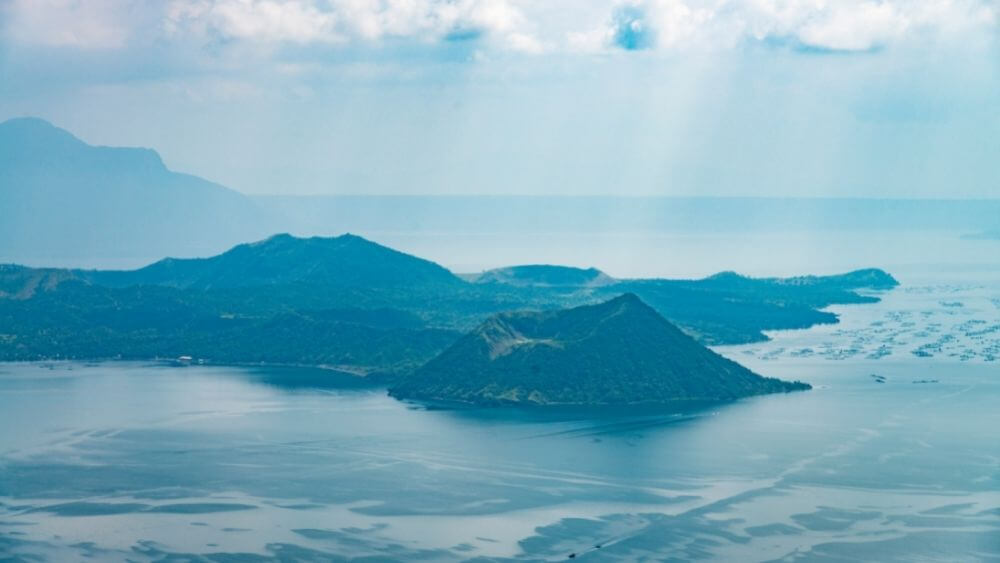There’s an Island Within a Lake On an Island Within a Lake On an Island

That title’s pretty confusing isn’t it? Well, interestingly enough, it is completely true and real. Nature and planet Earth never cease to amaze and that’s exactly the case of the Vulcan Point in the Philippines.
Yes, the Vulcan Point is in fact an island, located within a lake, located within an island, located within a lake of an island.
About 35 miles south of the capital city Manila, in the Philippines, lies the island of Luzon. On this island, within the Taal Lake, lies the smallest active volcano in the world, the Taal Volcano, at an elevation of 1,020 feet. The Taal Lake formed as a result of repeated eruptions between 140,000 and 5,380 years ago, due to which the mouth of the volcano widened and opened up, leading to the formation of the lake or caldera.
This lake lies within a volcano in a 16-19 mile-wide caldera. The formation of the caldera did not stop the volcanic eruptions from occurring either. Volcanic activity continues under the surface producing cones like structures that were pushed upwards, above the surface of the water, thereby forming islands of their own.
The volcanic activity is therefore responsible for the formation of such islands within the lakes of other volcanic islands.
The Taal Volcano Island (8.9 square miles) was the result of such repeated eruptions and cone formations and is largely composed of overlapping craters. The single crater lake of the Taal Volcano Island, known as the Main Crater Lake was formed as late as 1911 when a violent volcanic eruption lowered the elevations of the island by almost 10 feet. In fact, it is the largest lake on an island in a lake on an island in the world. The Taal Volcano is one of the most active volcanoes in the country, with over 34 recorded eruptions and so it is no surprise that more cones and cinders were formed which led to the formation of a small island within the Main Crater Lake, known as Vulcan Point.
The Taal Volcano is known for its violent eruptions and the destruction that they bring and has hence been designated a Decade Volcano that requires close study and observation due to its volatile and unpredictable nature.
So, the sequence is basically as follows:
Luzon Island—> Taal Lake—> Taal Volcano Island—> Main Crater Lake—> Vulcan Point
The world is a fascinating place and to think that there is so much of the world yet to be explored is both overwhelming and inspiring at the same time.






Responses